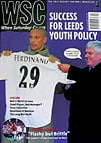 Leyton Orient and West Ham have grown even further apart since the Eighties, as Tom Davies reports
Leyton Orient and West Ham have grown even further apart since the Eighties, as Tom Davies reports
Football fans in London have always been more promiscuous than elsewhere, as one would expect with 13 clubs to choose from. If you couldn’t make your team’s away game you could always go elsewhere. A Chelsea fan could pop down to Fulham, a Leyton Orient fan might be tempted by a trip to Upton Park or Highbury (usually, to silently support the opposition), or a Spurs fan could pop up to Barnet.
But that’s changed. The big four Premier League clubs north of the river are now pretty much out of bounds for non-season ticket holders and those on limited incomes, and while the small clubs within their orbit such as Brentford and Orient may have picked up a few excluded fans, their relative status and prospects have suffered. In the Seventies and Eighties there didn’t appear to be much difference in the matchday rituals of those who would stroll along to White Hart Lane or Upton Park and those who got their kicks further down the scale. But now they are in two different worlds that barely acknowledge each other.
From an east London perspective, parity has rarely, if ever, existed. Ever since West Ham were elected to the league after the First World War, hot on the heels of Arsenal’s much-resented move from south London (and yes, we should all still be bitter) the Os were always likely to struggle, but there have been moments, even quite recently, when the narrowing of that gap has seemed tantalisingly close.
Between 1991 and 1993, for example, West Ham and Orient seemed genuinely to be edging closer towards each other. The Hammers’ relegation season of 1991-92 and its accompanying anti-bond scheme revolt briefly cut their crowds just as the Os seemed, tentatively, to be going places. In November 1992 a quirk of the fixture list gave both sides a home game on the same day. Orient, in the Second Division, drew nearly 9,000 to see them play West Brom, while First Division West Ham pulled in only 3,000 more for the visit of Notts County. As the Premiership bandwagon took off, West Ham looked like missing out.
Instead, they sneaked back up on the last day of the season. Within a couple of years they had two sparkling new stands, £20-plus admission prices and, seemingly, a purposeless place in the middle of the Premiership for all time. Orient brushed with bankruptcy, went down to the Third Division and ended up accepting Barry Hearn’s oily embrace. North of the river, at least, the Premiership has cemented London’s hierarchies.
East London’s two clubs have not been in the same division since a three-year spell before 1981. Admittedly those years saw little change in their historically unequal relationship (although it would be remiss not to mention John Chiedozie’s solo goal in the 2-0 Boxing Day win at Upton Park in 1978). West Ham fans tend to pat their neighbours on the head and tell them Orient are their second favourite team, a gesture which is met with general, though by no means unanimous, hostility.
It hasn’t helped that some of Orient’s least successful managers of recent times (Peter Eustace, Pat Holland, Tommy Taylor) have been tainted by claret and blue. However, for meaningful rivalries, Orient have had to look further afield, most recently to Brentford, Southend and – since an explosive 4-4 draw at the Goldstone in 1997 – Brighton. These all function perfectly well as rivals, dogged as they are by similar anxieties.
Yet despite having to share their catchment area (much more so even than your Stockports, Burys and Tranmeres, who are based in more clearly defined civic entities), Orient and other small clubs in London have managed to maintain a remarkably solid level of core support. During the Os’ traumatic 1994-95 season, during which they suffered 32 defeats and were relegated from the Second Division by 24 points, they averaged 3,500, only 2,000 fewer than two seasons earlier when they spent most of the season in the top six. They even managed more than 4,000 last season, despite dicing with relegation. Brisbane Road is a hard place to entice people to, but once they turn up they tend to hang around.
Aided by London’s large and fluctuating population, the capital’s small clubs will soldier on, their biggest threat coming not from bankruptcy or even bad ownership but from the designs of their richer neighbours, who would be happy to see the independent minnows on their doorsteps become nursery clubs. These tensions manifested themselves most recently when West Ham attempted to move to Orient’s Eastway training ground, until the site’s owner, the Lea Valley Park Authority, pulled out of the deal following considerable public opposition. However, because their own lease expired last season, Orient aren’t training at Eastway either and the issue remains in the balance – unlike the divide between the two clubs.
The Os have played a league fixture against every other club in London in the past 25 years, except Arsenal, whom we merely met in an FA Cup semi-final. The chances of supporters being able to make the same boast another quarter of a century from now look slim indeed.
From WSC 167 January 2001. What was happening this month